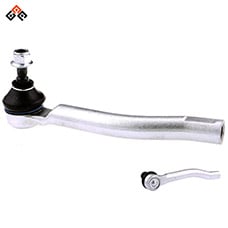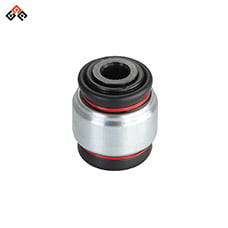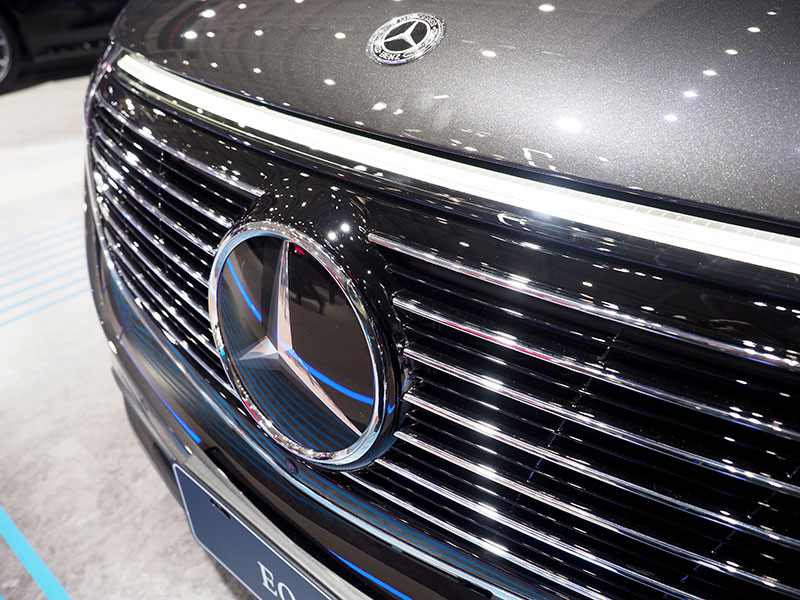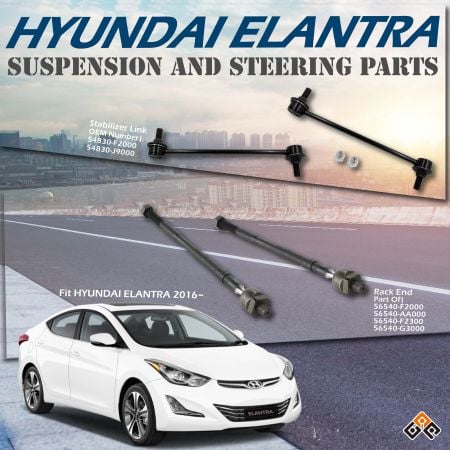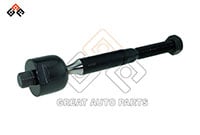Stabilizer Link Bar & Anti-Roll Bar for Mercedes Performance
How Stabilizer Link Bar & Anti-Roll Bar Enhance Driving Dynamics
Understanding the role of anti-roll bars and stabilizer bar link in Mercedes cars reveals not just the technical details but the commitment to excellence that defines the brand.
What are Anti Roll bars?
Anti-roll bars, also known as sway bars or stabilizer bars, are an integral part of a vehicle's suspension system designed to minimize body roll during cornering, sharp turns, or rapid maneuvers.
Essentially, they are U-shaped rods, typically crafted from high-grade steel, that bridge the gap between the suspension systems on both sides of an axle, usually connecting through the control arms. Their central attachment to the chassis, supported by rubber bushings, is where the magic begins.
The Battle Against Body Roll
Mercedes vehicles, known for their balance of luxury and performance, are not immune to the laws of physics. Body roll is a phenomenon all too familiar to driving enthusiasts. It's the lateral shift of the vehicle's body towards the outside of a turn, a movement that can reduce tire contact with the road and delay the vehicle's response to steering inputs. Here's where the anti-roll bar steps in, working tirelessly to counteract this effect. By transferring the load from one side of the vehicle to the other through a twisting action, it helps maintain stability and ensures the wheels remain as flat as possible during turns. The result? A Mercedes that's more responsive and adheres to the road with tenacity.
How Anti Roll Bar Works
- Initiation of a Turn:
When a vehicle enters a turn, the weight of the car shifts towards the outer wheels. This weight transfer increases the load on the outer suspension and decreases it on the inner suspension, causing the vehicle to lean towards the outside of the turn. - Activation of the Anti-Roll Bar:
As one side of the vehicle's suspension compresses (the side towards the outside of the turn), the anti-roll bar twists. Because it's a spring, it resists this twisting motion. - Transfer of Energy: The resistance against the twisting forces the less loaded side (the inner side of the turn) of the vehicle's suspension to compress as well. This transfers energy from the side that's compressing due to the turn to the opposite side, which tends to lift during the turn.
- Resulting Effect: By forcing the inner side of the vehicle to compress, the anti-roll bar effectively reduces the difference in suspension compression between the two sides. This action decreases the total amount of body roll.
The Connection Between The Anti-roll Bar and The Stabilizer Link Bar
The connection between the anti-roll bar and the stabilizer link bar is a fundamental aspect of a vehicle's suspension system to maintain stability and handling. This connection is not just physical but also functional, as it allows the entire system to minimize body roll during cornering and enhance ride comfort.
- Physical Connection
● Point of Attachment: The anti-roll bar extends across the width of the vehicle, with its ends typically anchored to the suspension components (such as the lower control arms or the strut assembly) on either side of the vehicle. The stabilizer link bar serves as the attachment point between the end of the anti-roll bar and the suspension component. This setup can vary slightly depending on the vehicle design, but the fundamental concept remains consistent.
● Design of Links: Stabilizer links come in various designs, including simple rods with bushings at each end or more complex assemblies with ball joints. These designs allow for a degree of flexibility and movement, accommodating the relative motion between the suspension components and the anti-roll bar as the vehicle moves. - Functional Connection
● Transmitting Forces: When a vehicle turns, the centrifugal force causes it to lean outward, lifting the inner wheels and compressing the suspension on the outer side. The anti-roll bar resists this torsion, but its effectiveness depends on its connection to the suspension via the stabilizer links. As one side of the suspension compresses, the stabilizer link transmits this force to the anti-roll bar, which then twists, exerting an opposing force on the other side. This action helps to equalize the forces on both sides of the vehicle, reducing body roll.
● Adapting to Motion: The stabilizer link's design, with its bushings or ball joints, allows it to adapt to the vertical movements of the suspension while maintaining a solid connection between the anti-roll bar and the suspension components. This is crucial to make sure that the anti-roll bar can effectively counteract body roll without adversely affecting the suspension's ability to absorb bumps and maintain tire contact with the road. - Importance of the Connection
● Vehicle Stability and Handling: By effectively minimizing body roll, the anti-roll bar, through its connection with the stabilizer links, enhances the vehicle's stability and handling. This is particularly important during quick maneuvers, cornering at high speeds, or navigating uneven terrain, where vehicle dynamics can be significantly affected by lateral forces.
● Ride Comfort: While the primary function of the anti-roll bar and stabilizer links is to improve handling and stability, they also contribute to ride comfort. By managing body roll, the system helps maintain a more level ride, reducing the lateral motion that passengers feel during turns.
Key Differences
- Primary Function: The anti-roll bar's primary function is to reduce body roll by using torsion resistance between the vehicle's left and right sides. The stabilizer link's main role is to connect the anti-roll bar to the suspension system, enabling the transfer of this torsional resistance to the wheels.
- Design and Construction: Anti-roll bars are long, curved bars made of spring steel, designed to span across the vehicle and flex torsionally. Stabilizer links are comparatively smaller components, often consisting of rods with bushings or ball joints, designed to connect the anti-roll bar to moving parts of the suspension.
- Mechanical Role: The anti-roll bar acts as a torsional spring that absorbs and redistributes lateral forces to minimize body lean. The stabilizer link, on the other hand, does not directly influence the vehicle's dynamics but is essential for the functionality of the anti-roll bar by providing a flexible yet sturdy connection to the moving parts of the suspension.
Great Auto Parts Stabilizer Bar Link Features
- Material Excellence: Made from high-strength steel, either cold or hot forged, ensuring durability and resilience.
- Corrosion Resistance: A superior surface treatment provides excellent anti-rust protection, extending the lifespan of the bars.
- Optimized Swing Angle: Designed with a minimum 60-degree swing angle for enhanced flexibility and handling precision.
- Exceptional Strength: Matching or surpassing OE standards in pull-out strength, these bars offer superior endurance.
- Seamless OE Replacement: Direct OE replacements, ensuring perfect fit without modifications.
- Accessibility: Available in small quantities with an MOQ of 30 pcs, making high-quality components accessible to more owners and workshops.

